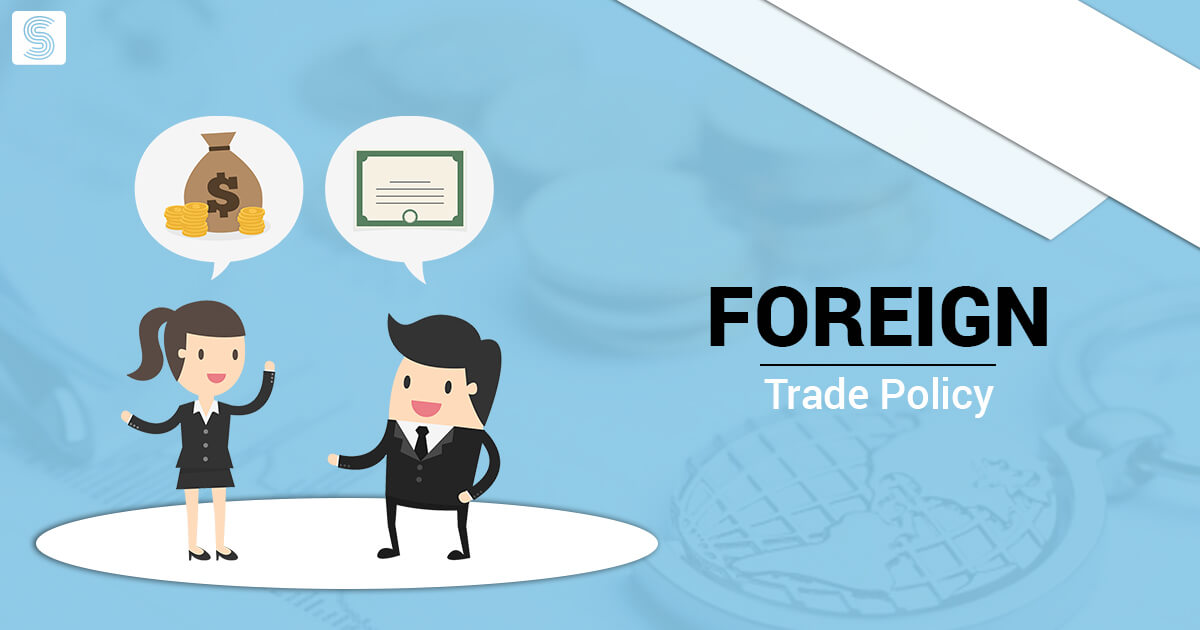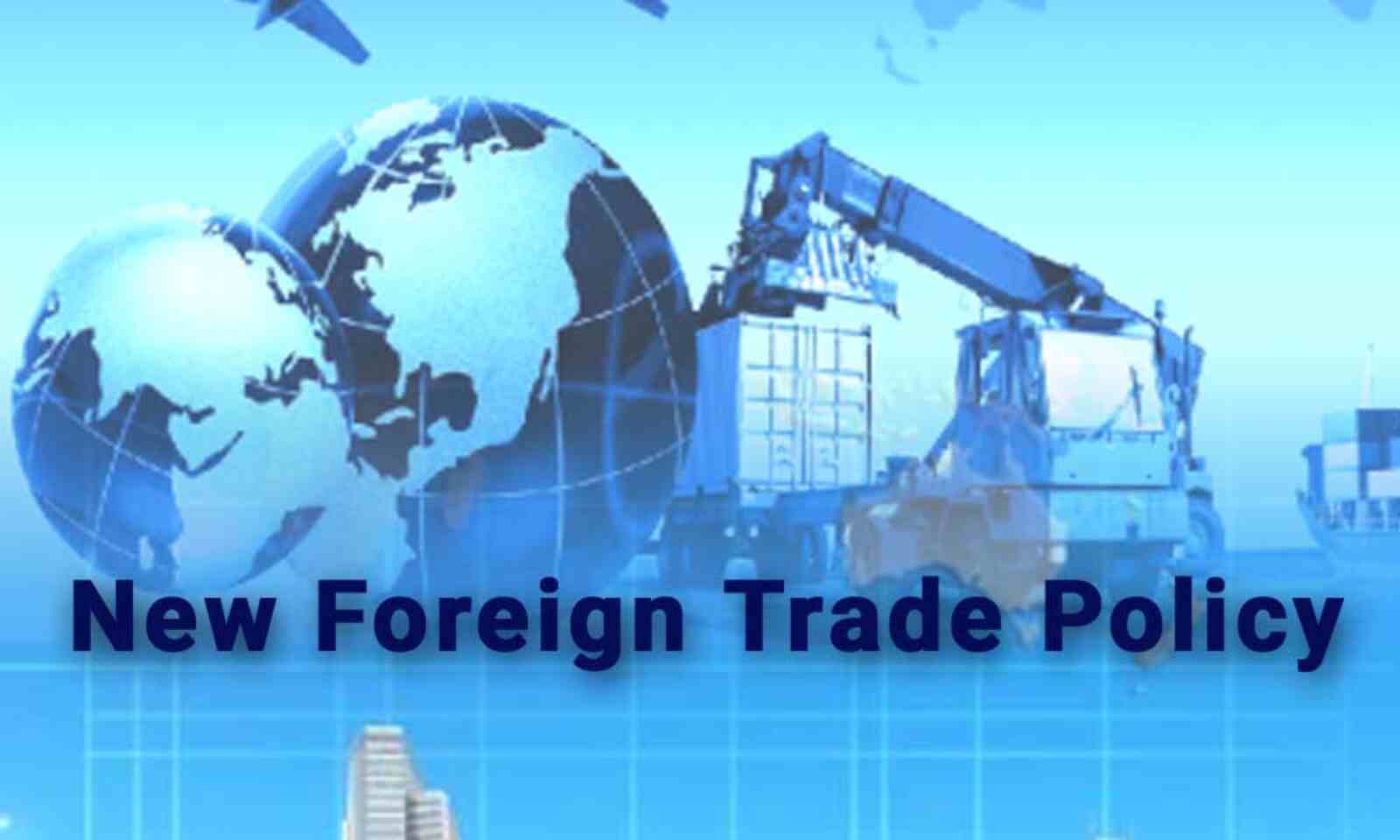The fiscal year 2021-22 concluded on a positive note for India’s foreign trade; Indian exporters not only showed COVID resilience but also achieved robust growth with record revenues of $419.65 billion, which is being interpreted as a sign of exports rebounding robustly.
Policymakers are praising the Free Trade Agreements (FTA) with Australia and the United Arab Emirates as opening doors to a plethora of prospects for Indian companies.
All of these accomplishments must not obscure the fact that India still needs a new Foreign Trade Policy (FTP). The latest FTP was announced in 2015, with a new one set to begin in April 2020; it has been repeatedly extended since then. Given current geopolitical changes, the emphasis on local manufacturing, and an orientation on bilateral trade conventions, the necessity for a new FTP cannot be overstated.
What Importance Does a Foreign Trade Policy Have?

- The Foreign Trade Policy is a legally binding document released by the Indian government and enforced under the Foreign Trade Development and Regulation Act of 1992.
- Since the 1991 economic reforms, the FTP has been the guiding beacon for all stakeholders, being revisited and announced every five years.
- A foreign trade policy’s main goal is to make trade easier by lowering transaction and transit costs and times.
- A FTP lays out the rules for cross-border commerce and indicates the government’s position on a number of simultaneous but important policy factors including technology flow and intangibles.
What is the Importance of a New Foreign Trade Policy?

Clarifying India’s Global Position:
- It is critical to clarify India’s position and alignment with flagship programmes such as the ‘Local for Global’ and PLI (Production Linked Incentive) schemes, the WTO’s ruling against India’s export incentive schemes, an overdue review of the Special Economic Zone (SEZ) scheme, changing geographical profiles of India’s export basket, and the implications of free trade agreements.
- A WTO dispute settlement panel ruled in 2019 that the FTP’s export incentives are in violation of India’s WTO commitment.
Effect on Export-Oriented Companies:
- Another argument for revamping the FTP is that some ad hoc, mistimed, and conflicting revisions to the 2015 FTP have harmed some export-oriented enterprises.
- The 2015 FTP encouraged exports by immediately providing dutycredit scrips in proportion to exports.
- However, the government set a cap of Rs. 20 million for goods export incentives in 2020, and Rs. 20 million for services export incentives in 2021. Furthermore, the modifications to service incentives were announced in September 2021 and will take effect in April 2019.
Cuts in spending and incentives:
- The yearly export incentives of Rs. 51,012 crore under the Merchandise Exports from India Program (MEIS) and Services Exports from India Scheme (SEIS) were replaced with a Rs.12,454 crore RoDTEP scheme incentive.
- The remaining Rs. 38,558 crore was channelled into PLI to benefit a few industries.
- Additionally, a previous 3% export incentive on agricultural items such as tractors has been lowered to 0.7 percent.
Setbacks in Infrastructure:
- The typical turnaround time for ships in India is roughly three days, compared to the world average of 24 hours, due to inadequately modernised export infrastructure such as ports, warehouses, and supply chains.
MSMEs in Peril:
- MSMEs, which account for around 29% of GDP and 40% of foreign commerce, are critical to meeting the ambitious export ambitions. The rise in input and gasoline expenses, on the other hand, is affecting MSMEs’ bottom lines.
- Rising raw material prices, such as steel and plastics, combined with a lack of shipping containers and labour, are making it harder for MSMEs to fully capitalise on global demand growth.
Politics of Freebies
What are the potential changes in the new FTP?

Solving the Crisis of MSMEs:
- Providing an incentive of 3-7 percent of net foreign exchange revenues to services exporters of registered services in India is offered under the SEIS.
- With the new FTP, a revision in the minimum ceiling for net foreign currency profits eligible to claim under the plan, as well as speedier GST refunds to global services, is critical.
- The government must also assist MSMEs in tapping the export potential of existing tariff lines and give policy assistance in order to expand the number of exporting MSMEs and MSME exports by 50% in 2022-23.
- The new FTP might assist exporters if the incentives offered to retail and wholesale dealers under the MSME category are also extended to them.
Infrastructure Upgrade:
- Warehouses, ports, special economic zones, quality testing laboratories, certification centres, and other infrastructure can assist exporters stay competitive in a competitive market.
- To keep ahead of technology-advanced countries like China, India must spend in improving export infrastructure.
- It must also embrace contemporary trade procedures, which may be accomplished by digitising export operations. This will save time and money.
GST Export Advantages:
- The GST export advantage is now beyond the scope of FTP, resulting in the denial of export incentives to some types of exporters.
- As a result, bridging the gap between the two policies is critical. Furthermore, the timely disbursement of GST refunds with minimal administrative delays is critical.
Schemes that are WTO-compliant:
- The FTP should be built around this. To provide a level playing field for all nations, the WTO seeks to discourage governments from substantially subsidising exporters.
- The Indian government recognises the importance of adhering to WTO rules and has already made measures to eliminate subsidy-based programmes.
- However, at a basic level, more has to be done to encourage exports and guarantee that Indian exports are competitive in the global market.
Other measures include:
- Policymakers must quickly broaden the scope of their consideration to include all stakeholders, resulting in a deliberately conceived and guided policy vision 5 that directs both the government and private firms for the country’s economic success.
- These factors should also take into account the current paradigm, such as the pressing demand for fuel import substitution, as well as the use of improved logistics and entrepreneurial drive.
- Given the pandemic’s economic impact, the new FTP will work in stages to resolve export restrictions, evaluate the legislative and operational framework to minimise transit costs, and promote a low-cost operating environment through enhanced logistics and utilities infrastructure.
